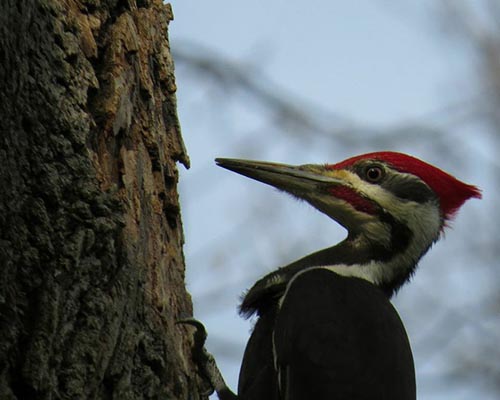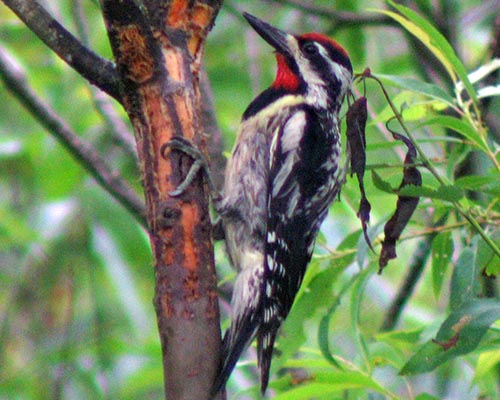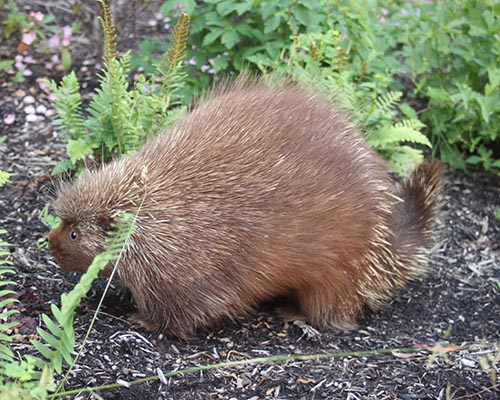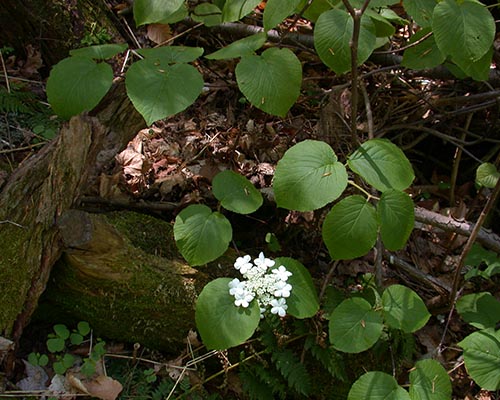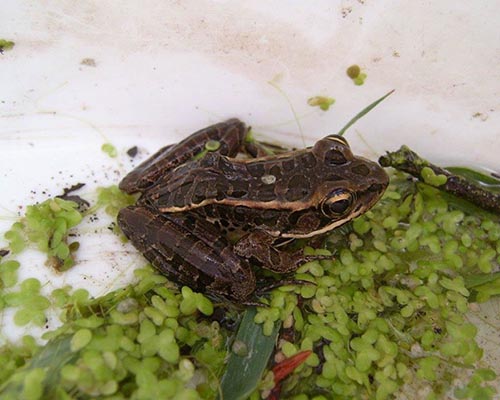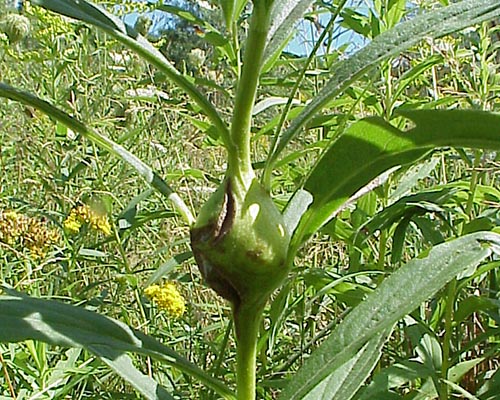A walk through the woods can feel a bit odd. You know the animals are out there, but all you see is plants. The Adirondacks are a haven for animals of all sorts. So, where are they? Most animals here have learned to avoid humans. Hunting, trapping and other such human behaviors have instilled learned or even evolved avoidance behaviors. But you can still tell that the animals are out there. You just need to learn to read their signs.
The American black bear is this continent’s smallest bear species; the grizzly and the polar bear are both much more formidable, but are not found in the Adirondacks. Black bears are omnivores, eating a wide variety of foods, depending on the season. Bears often mark trees with their claws or teeth to communicate with other bears.
The pileated woodpecker (Dryocopus pileatus) is the largest woodpecker in the United States — assuming the ivory-billed woodpecker (Campephilus principalis) truly is extinct. With luck, you will see one. They are not uncommon. Until then, try to spot one of their feeding holes. The rectangular shape of their holes is unique in comparison to other woodpeckers here.
The yellow-bellied sapsucker (Sphyrapicus varius) is a woodpecker in the family Picidae, like the pileated woodpecker. Smaller than the pileated and with a red throat, this sapsucker drills a series of horizontal rows of holes in trees and then eats the sap as well as the insects drawn to the sap. The grid display of holes that it leaves behind in tree trunks is clear evidence of its presence.
The North American porcupine (Erethizon dorsatum) is one of the largest rodents in North America. A nocturnal herbivore, the porcupine rests in trees during the day and feeds on vegetation at night. It particularly enjoys the inner bark, or cambium, of trees. You can tell a tree that a porcupine has been working on because the outer bark is stripped away. The wood siding of the Raquette Lake sauna was damaged by porcupine, perhaps seeking the salt left behind from sweating patrons.
Hobblebush (Viburnum lantanoides) is a perennial shrub. It grows in moist woodlands, along stream banks and in swamps. It is a favorite food of deer in the winter, which eat its twigs, right down to the level of the snow. If you see nibbled hobblebush in the spring, it provides evidence both of the deer that ate it and of the height of the snow the previous winter. Then, as you look along the edge of the lake, notice that branches on trees start at about four feet above the ground. Any branches lower than this are eaten by deer browsing along the shoreline in the winter.
When looking for evidence of animals, use all your senses. Sound can provide particularly good evidence: the calls of birds, the rustles of animals in the underbrush, the whirr of an insect. The northern leopard frog (Lithobates pipiens) is a handsome frog with a distinctive call, a snore-like rattle punctuated with rasps and croaks. It is found in ponds, marshes and small streams.
Insects are everywhere in the Adirondacks. Sometimes they can be hard to find; however, many are masters of camouflage. Galls are evidence of insects. Some insects produce plant hormones that stimulate growth, and inject these hormones into leaves or stems to create a gall — a home and a food source. There are many types of galls, generally ranging from oval to circular in shape, and the insect responsible can often be identified.

